
Transform the service desk to predict issues and automate preventative resolutions to improve digital employee experience
This is the second in a three-part series focusing on the core tenets of managing digital employee experience. Also read “Part I: Focus on Visibility” and “Part III: Continually Transform,” and discover even more by visiting our DEX landing page.
IT has heard it all before.
“Something’s wrong with my computer.”
“My internet is slow.”
“This app keeps crashing.”
“I keep getting blue screens.”
“I think my new laptop hates me.”
But no matter the issue that prompts a service call, email, or ticket, they all have one thing in common: They degrade digital employee experience (DEX). And the longer there’s a problem, the more impact it has on productivity.
Identifying and remediating issues as quickly as possible, though, isn’t always easy.
Because while there might be dozens of users who’ve reached out to the service desk about productivity roadblocks, there could be dozens more that haven’t. Digital environments are also vastly more complex as a result of bring-your-own-device (BYOD) culture, SaaS solutions, and other emerging technologies. And many organizations currently support dispersed workforces that span across locations and time zones, further limiting IT visibility.
With all these obstacles, how can IT teams even go about optimizing service desk operations and making remediation more effective?
The key to quicker resolutions — and, of course, better employee experiences and higher productivity — doesn’t solely depend on encouraging users to file more support tickets or even hiring clairvoyant IT professionals. The solution is actually a matter of switching approaches — namely moving from a reactive default to a proactive method with the right digital experience management (DEM) strategy and tools in place.
Transforming IT for a New World
Way back when, IT took a very different approach to service desk support — one that focused on machines rather than humans and dealt with incidents only after they already happened.
But now that digital environments have become increasingly complex and users demand more from their devices and technology, it’s ushered in a new era for IT.
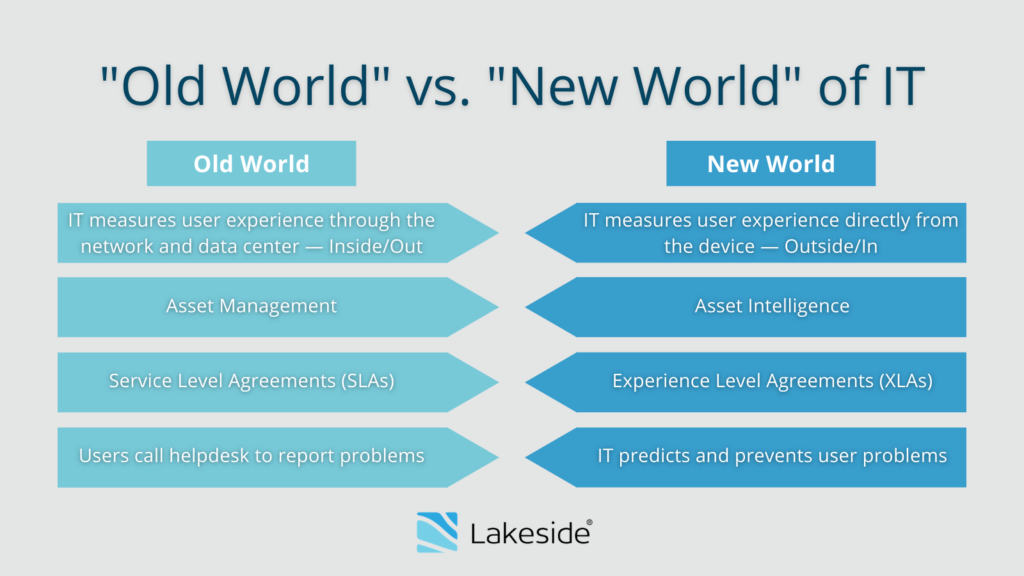
Instead of having a reactive approach — depending mostly on users filing support tickets before remediation can start — more IT teams are embracing a proactive strategy that tackles issues as they appear and, ideally, before digital employee experience is ever impacted.
But a more predictive process requires a holistic view of digital environments as well as more powerful remediation tools, including advanced analytics, artificial intelligence for IT operations (AIOps), and automation. That’s why more and more organizations are turning to digital experience management to transform their service desk operations.
Using DEM to Power Proactive IT Support
Digital experience management — a process of analyzing usage and performance data across devices, structures, and services to understand the quality of users’ digital experiences — provides IT with expanded visibility and a better understanding of digital experiences by continuously gathering and analyzing metrics directly from endpoints.
Those metrics might include:
- Hardware and app performance
- Latency time
- CPU, memory, or storage usage
- Network connectivity
- App or system faults
- Slow startup times
These data points are then aggregated and displayed in highly visual dashboards and reports that can show at a glance the state of digital environments as well as provide customized, in-depth views of specific data sets. It also provides a single source of truth for IT — as well as C-suite executives, HR, and other decision makers — to understand what end users experience.
With that kind of visibility across the IT estate and into user behaviors, there’s no need to only depend on support tickets filed by end users — if they do so at all — to know what issues are impacting digital employee experience. Digital experience management allows IT teams to quickly understand what’s happening, who’s affected, why, and possible solutions.
It also allows IT to take preemptive steps that can minimize issues in the first place. With a better view of assets and user needs, organizations can right-size hardware and software and weed out unused/underutilized apps that can put a drain on IT resources.
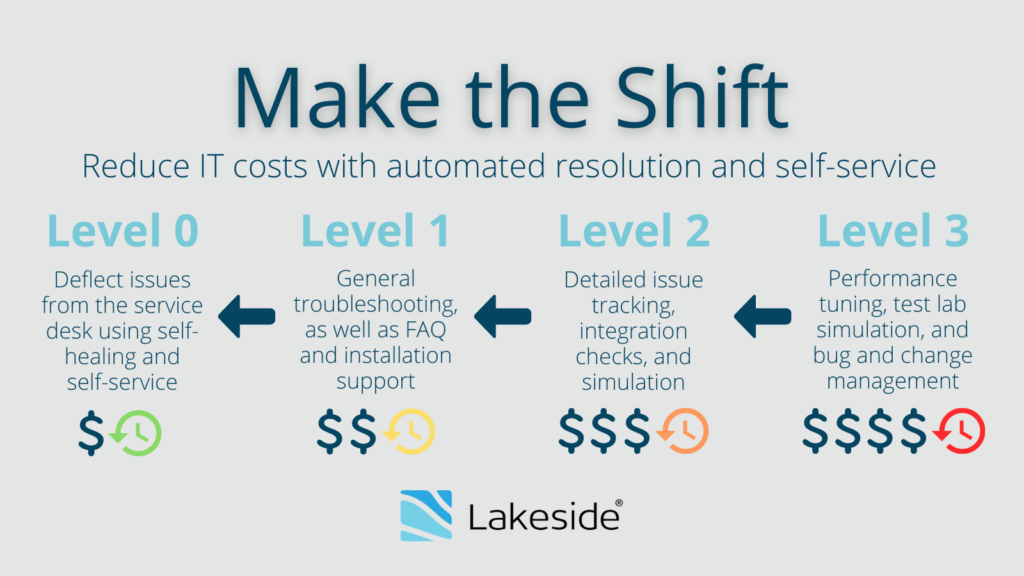
But this move toward more proactive service desk operations isn’t just a step in the right direction — it’s also a gradual shift to the left.
By addressing issues head-on, organizations can then start to move toward “level 0” support that predicts and prevents issues right from the very start through self-healing and self-service.
And not only does that improve digital employee experiences and productivity, but it can save IT time and resources that might otherwise be spent on higher-level remediation.
Predict and Prevent Bad Digital Employee Experience
Nothing puts a halt to productivity faster than a blue screen of death (BSOD). Or a crashed app, dropped video call, cloud-service outage, connectivity issue, and any myriad problems that employees might face while trying to get their daily work done.
Which is why IT needs a solution that can effectively identify and solve issues while also predicting and preventing others from happening.
A solution like Lakeside Software’s Digital Experience Cloud.
Here’s how it works: Our cloud-native, multi-tenant platform — powered by Lakeside’s DEM solution, SysTrack — deploys a lightweight agent to endpoints, securely capturing more than 10,000 metrics every 15 seconds from the edge. This deep data collection is then analyzed to provide IT with an expanded view of digital environments, both in real time and historical context, as well as actionable insights that can improve overall digital employee experience, also known as end-user experience.
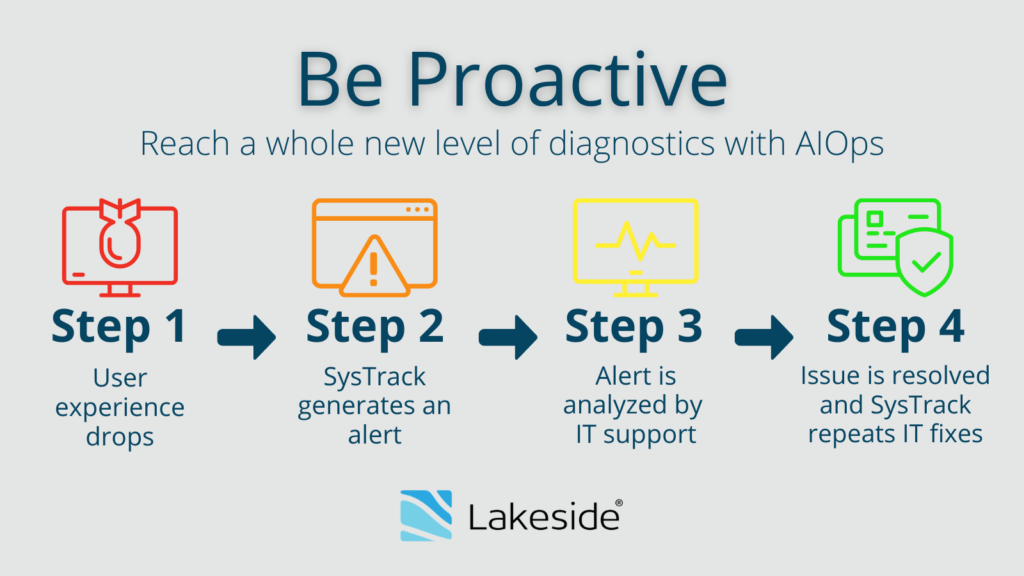
And, of course, Lakeside’s solution also offers tools and AI-powered capabilities that are critical to effective and proactive IT support, and can help provide organizations with:
- Faster support and lower incident volume with early remediation
- Optimized service desk operations, which frees up time and resources for higher-value work
- Lower end-to-end costs by eliminating problems at the source
- Better detection and prediction for hard-to-identify anomalies
- Greater data use and more value from existing toolsets
- Improved digital employee experience and productivity
Here’s a quick look at a few of Lakeside’s key proactive features:
Proactive Services
Quick resolutions are good, but preventing problems whenever possible is even better.
The Lakeside’s Prevent tool applies AI processing to endpoint data in order to provide sensors and alarms, pattern discovery, automatic self-healing scripts, mass-healing options, reporting, and more to help identify, solve, and even predict issues across the digital environment before end users are impacted.
Intelligent dashboards
Finding answers for better remediation, automation, or asset optimization all depend on having the best viewpoints.
With Lakeside’s intelligent dashboards, IT teams can easily create customized views that prioritize the most relevant metrics and unlock insights needed for specific actions.
Some example uses for these dashboards might include:
- Segmenting users into personas for targeted hardware or software refreshes
- Viewing assets to right-size for an upcoming VDI migration
- Quickly identifying issues that have the most impact on digital environments
- Determining adverse impacts caused by changes/updates
- Tracking the performance of remote work setups
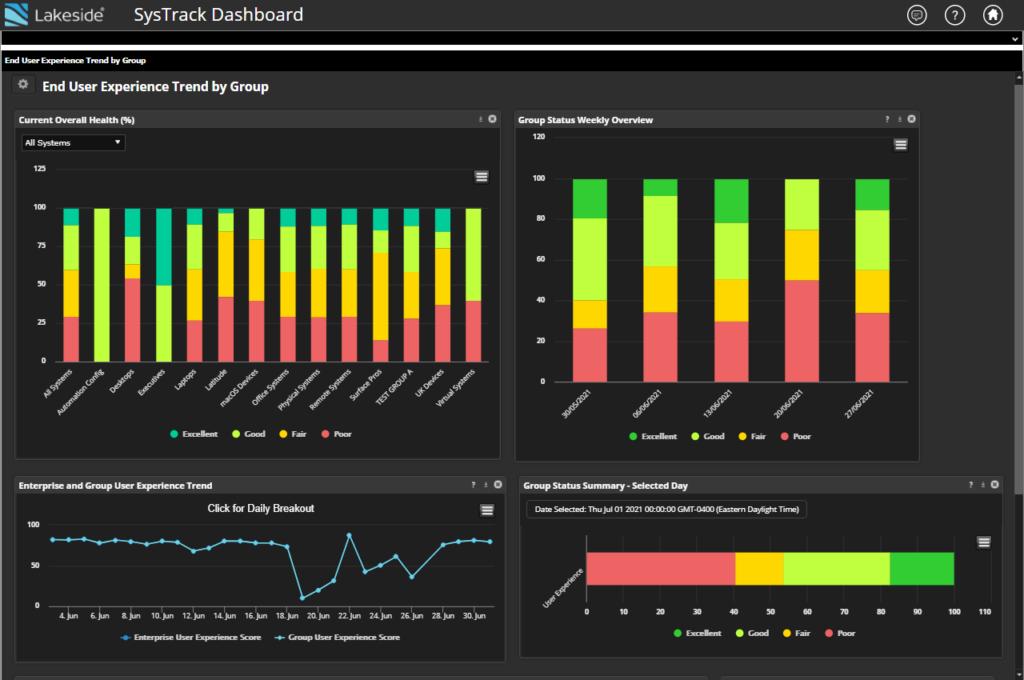
Self-healing and engagements
End users also have a role in more proactive support.
Lakeside’s recent version release introduces two new tools — the Self-Help IT Portal app and SysTrack Engagements — that empower employees to take quick, simple action when SysTrack sensors detect common issues.
Within the Self-Help app is a one-stop hub for IT announcements, step-by-step and one-click resolution paths, system info, and a toolkit with a library of scripts.
Meanwhile, SysTrack Engagements is a customizable notification mechanism that prompts users to take action when certain sensors are triggered. Example engagements might alert users that a restart is needed for an update or that the desktop recycle bin needs to be cleared.
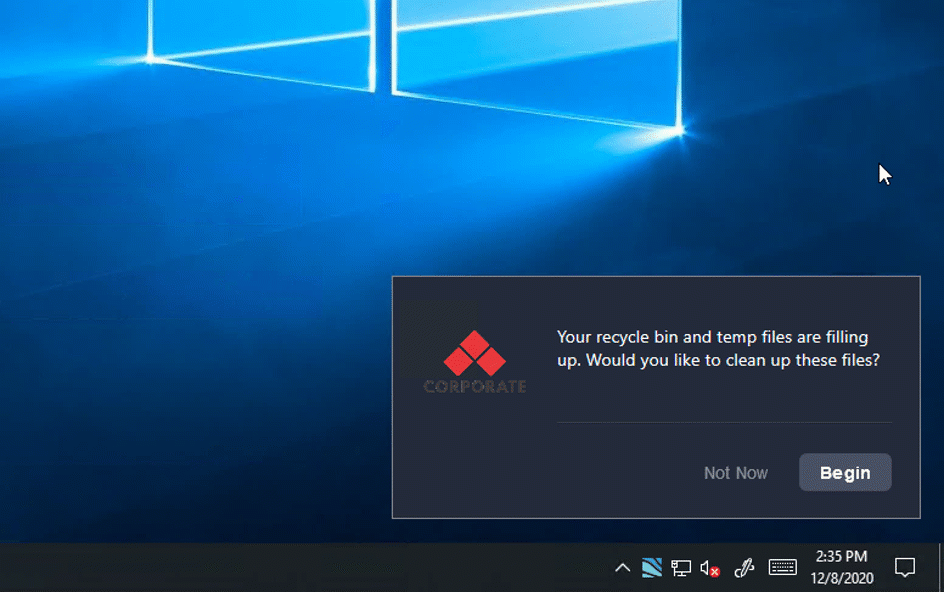
ServiceNow integration
There’s no time to waste when it comes to sudden issues that impact employee productivity.
That’s why the Lakeside Assist for ITSM integration within ServiceNow provides detailed endpoint info with every support ticket.
With just a little bit of context — a snapshot of system info, application state, and user activity data — the Level 1 help desk is able to accelerate root cause analysis and reduce overall mean time to resolution (MTTR).
Lakeside also makes it easier for users to submit these detailed ServiceNow tickets through SysTrack’s feedback surveys, user engagements, and the Self-Help IT Portal.
So no matter the issue, employees can get back to being productive in no time.
Subscribe to the Lakeside Newsletter
Receive platform tips, release updates, news and more



